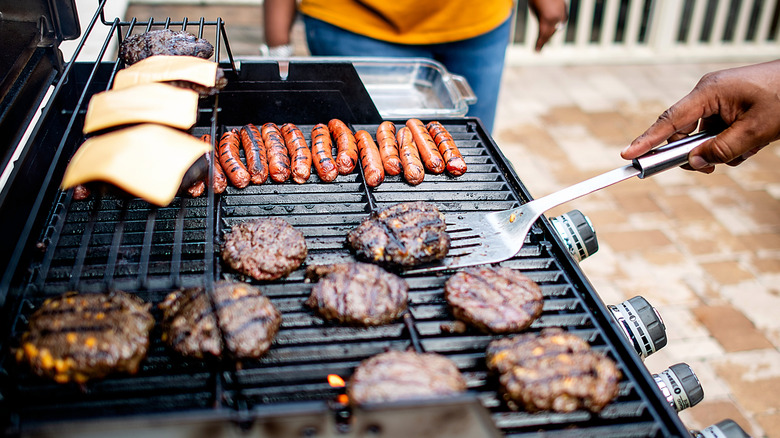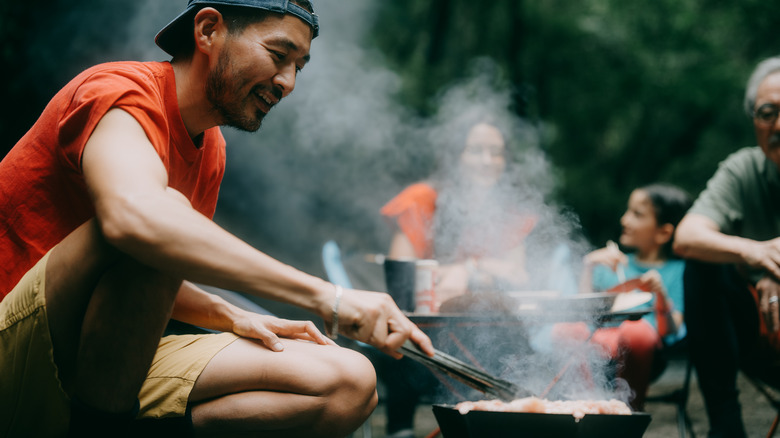How Your Cooler Can Save You From A Lukewarm BBQ
A sunny-day cookout with perfectly charred flame-grilled barbecue is one of the joys of summer. But barbecued foods lose some of that hot-off-the-grill flavor when they sit too long and become lukewarm. That can happen when the food is finished cooking but people aren't ready to sit down and eat yet. Or maybe you're grilling lots of burgers for a stocked burger bar, or different foods to make a BBQ charcuterie board. Some meats, like brisket, need to rest for a while. Covering plates of grilled food with aluminum foil will help, but a better solution for keeping food hotter longer involves using a cooler.
The same insulation that keeps food cold will also hold in heat, keeping hot food nice and hot. In fact, a cooler used for hot food is sometimes called a "faux Cambro," after a popular brand of insulated containers professional cooks use to transport food. There are a few steps to prepping a cooler for barbecued eats. Begin by warming it with hot water. This can be a large pot of hot water (not boiling) or you can use enough water to fill the cooler. Once the water has been added, close the lid and let it sit for 30 minutes. Drain the water and dry the inside.
Place a towel, aluminum foil, or a piece of cardboard from a box at the bottom of the cooler. This protects it from cracking from direct contact with hot food and also provides more insulation to keep the food warm.
How to pack barbecue in a cooler to keep it hot
Once the cooler is warmed and bottom-lined, it's ready to go. Wrap the hot food tightly in heavy duty aluminum foil. For extra insulation, wrap the foil packages in a towel. Place them in the cooler along with any other dishes you want to keep warm, like baked beans or cornbread, and surround them with more towels to fill empty space.
You can put a few things in the cooler to maintain heat similar (but opposite) to how ice is packed in with food and drinks to keep them cold. Water bottles filled with hot water, rice-filled socks microwaved until they're hot, and heat packs can all be put around the food to maintain temperature. If you have bricks in the garage, try wrapping two or three (depending on the cooler's size) in aluminum foil and putting them in the oven at 300 degrees Fahrenheit for 20 minutes. Then lay them on a towel topped with aluminum foil at the bottom of the cooler. Put a dish towel over the foil-wrapped bricks and then put in the food.
Just like traditional cooler foods need to be kept at a safe temperature, the same is true for barbecue. Meat and poultry must be kept at 140 degrees Fahrenheit or higher, for example. A good trick is using a digital food thermometer with a cable to a separate temperature display. Insert the probe into the food and leave the display on top of the closed cooler so you can see if its temperature is heading toward the danger zone.

